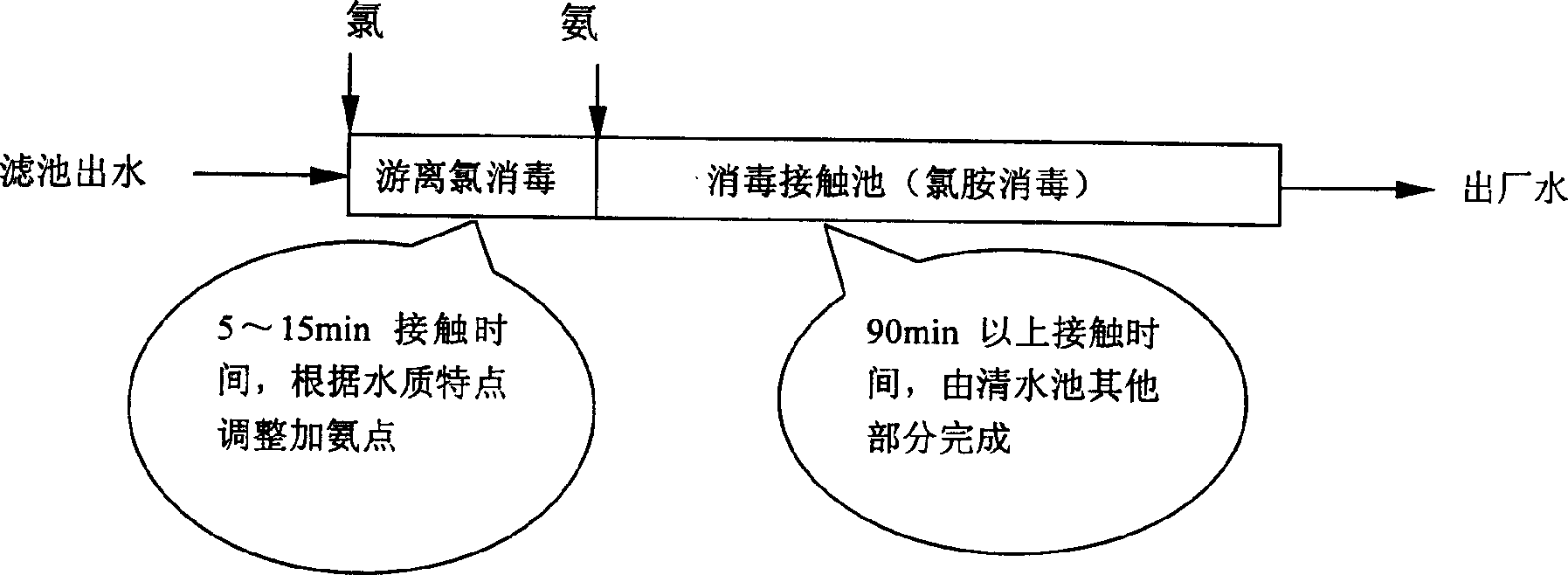Sequential water treating and sterilizing method by chloramine after short free chlorine
A disinfection method and free chlorine technology, applied in the direction of sterilization/microdynamic water/sewage treatment, etc., can solve the problems of inability to take into account the disinfection effect, the generation control of disinfection by-products protected by the remaining disinfectant, and the economical and operability issues. To achieve the effect of effective control of by-product production, reduction of production rate, and economical and efficient disinfection effect
- Summary
- Abstract
- Description
- Claims
- Application Information
AI Technical Summary
Problems solved by technology
Method used
Image
Examples
Embodiment Construction
[0029] Below in conjunction with embodiment technical solution of the present invention is described further:
[0030] In the water plant disinfection process, the present invention firstly adds chlorine to carry out free chlorine disinfection, then adds ammonia to water after a suitable contact time (generally less than 30min, shorter than conventional chlorine disinfection contact time), and converts free chlorine in water into Chloramine, proceed to chloramine disinfection. According to the different water quality (such as water temperature, pH, bacteriological indicators, concentration of disinfection by-product precursors or organic content), select the appropriate amount of chlorine, free chlorine disinfection time and appropriate proportion of ammonia. The clean water pool is specially constructed to meet the requirements of adjusting the short-term free chlorine disinfection contact time. See attached image 3 .
[0031] The sequential disinfection process of short-...
PUM
 Login to View More
Login to View More Abstract
Description
Claims
Application Information
 Login to View More
Login to View More - R&D
- Intellectual Property
- Life Sciences
- Materials
- Tech Scout
- Unparalleled Data Quality
- Higher Quality Content
- 60% Fewer Hallucinations
Browse by: Latest US Patents, China's latest patents, Technical Efficacy Thesaurus, Application Domain, Technology Topic, Popular Technical Reports.
© 2025 PatSnap. All rights reserved.Legal|Privacy policy|Modern Slavery Act Transparency Statement|Sitemap|About US| Contact US: help@patsnap.com



